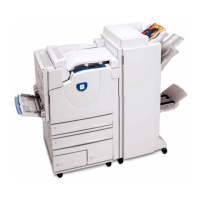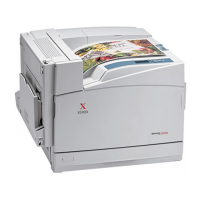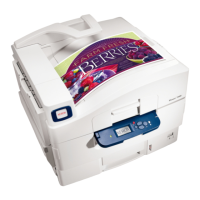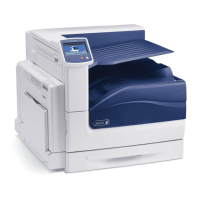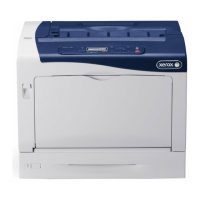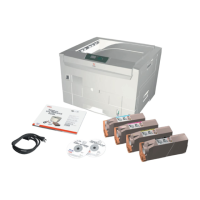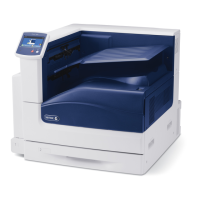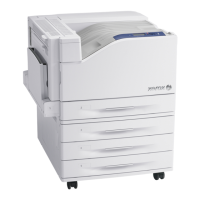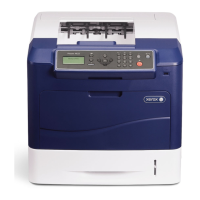3-8 Phaser 7750 Printer Service Manual
■ The front panel display is cleared.
■ The backlight is turned on with nominal intensity.
■ The POST Vn.nn message appears, and tests are quickly executed.
■ If any tests fail, the front panel screen freezes with the name of the test
displayed and the line posted is “Call Customer Service”.
■ After the POST tests have finished running, the Xerox ‘splash screen’ is
posted to the front panel and PostScript begins initialization.
POST Faults
There are two kinds of faults: soft and hard.
A soft fault is any fault that is discovered by POST, but does not prevent the operating
system from initializing and becoming available as a tool for troubleshooting. These
POST faults do not stop execution and are reported on the StartPage in a red box after
the system is running.
A hard fault is any fault discovered by POST that prevents the operating system from
initializing successfully. A hard fault prevents the system from further execution and
is halted with blinking LEDs (front panel and health LED). The test name of the test
that failed is displayed on the front panel.
Hard Fault Reporting Devices
■ The health LED flashes according to the fault code.
■ A Vx Works text string is printed out the serial port.
■ The front panel LED flashes in unison with the health LED.
■ The last fault message posted to the front panel is present.
Note
All soft faults are printed on the Startup Page.
POST Fault Reporting LED Blink Patterns
For faults identified as hard faults, the POST firmware causes the PS ‘health’ LED
and front panel LED, to blink in a particular pattern to identify the fault. There are
short and long blinks. A long blink is worth 5 and a short blink is worth 1. If a fault
blink pattern is flashed as long, long, short, short, this is fault code 5+5+1+1=12,
which indicates a failure in the CPU interrupt test.
The exception to the above pattern is a RAM test error. The RAM tests have a special
blink pattern and the front panel displays “RAM Error”. During power up the front
panel LED is on. If the RAM tests fail, the image processor board ‘health’ LED is
turned off, and the front panel LED is red. At 1/2-second intervals, the ‘health’ LED
and the front panel LED toggle continuously.
